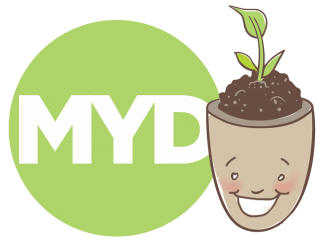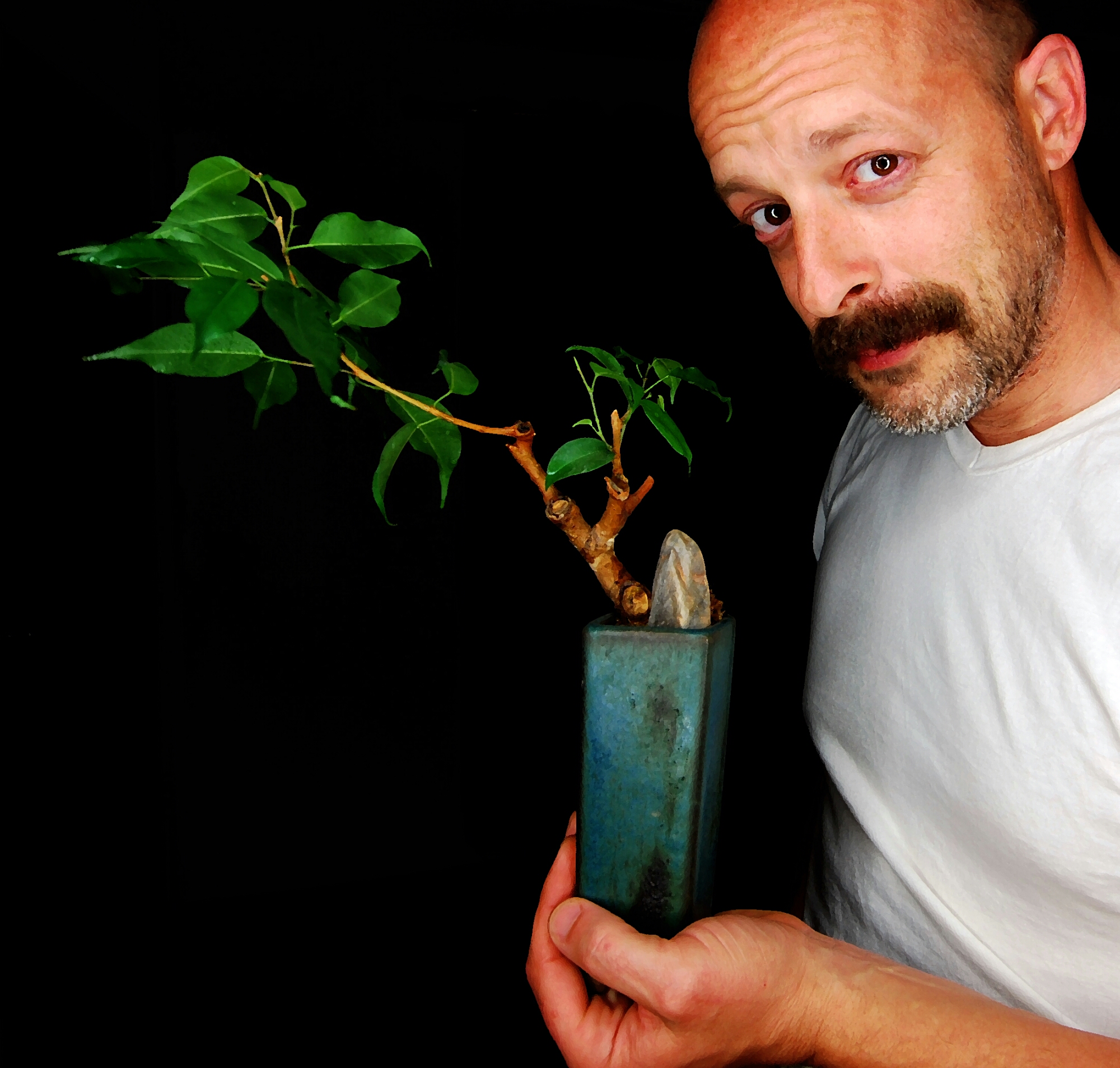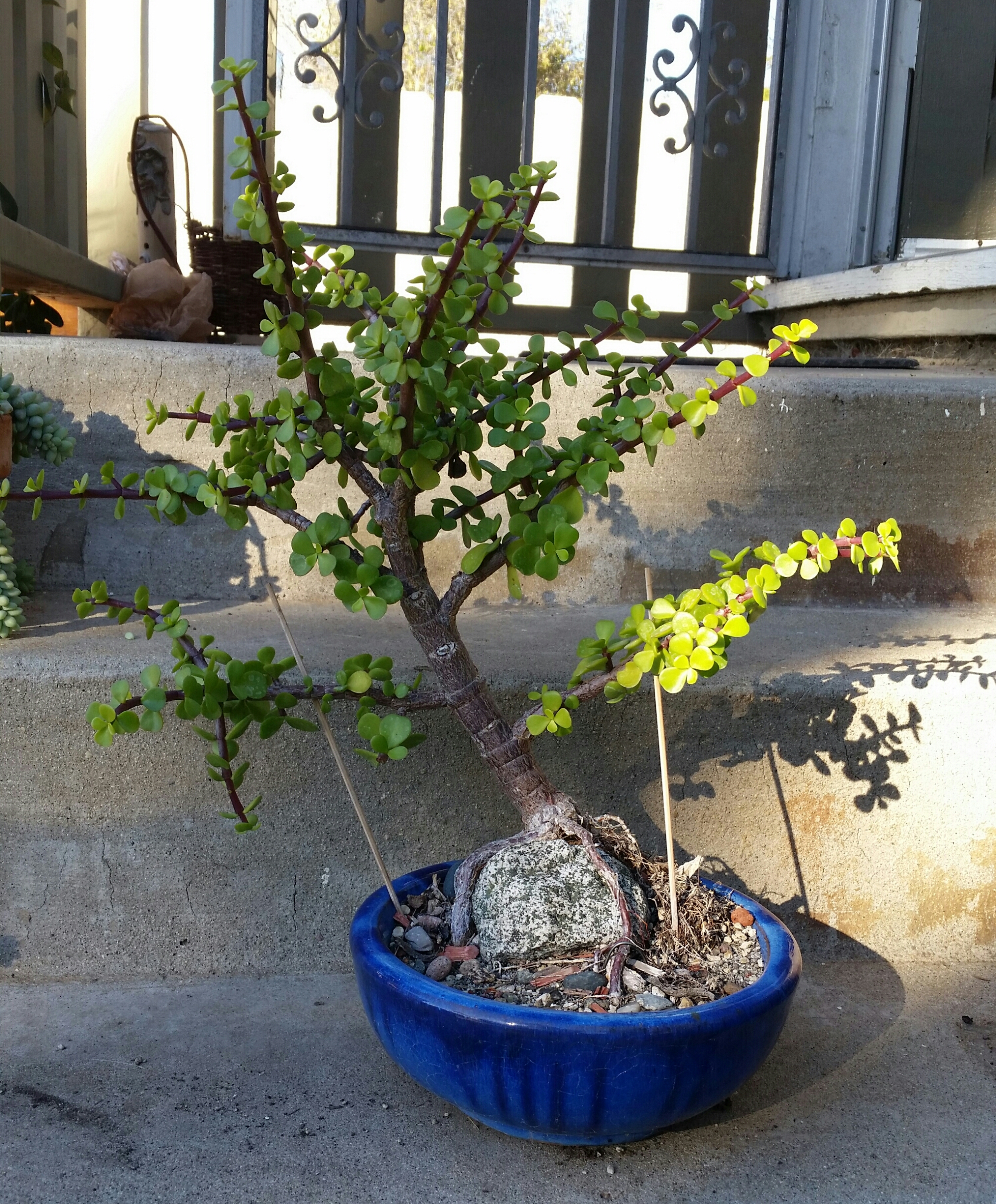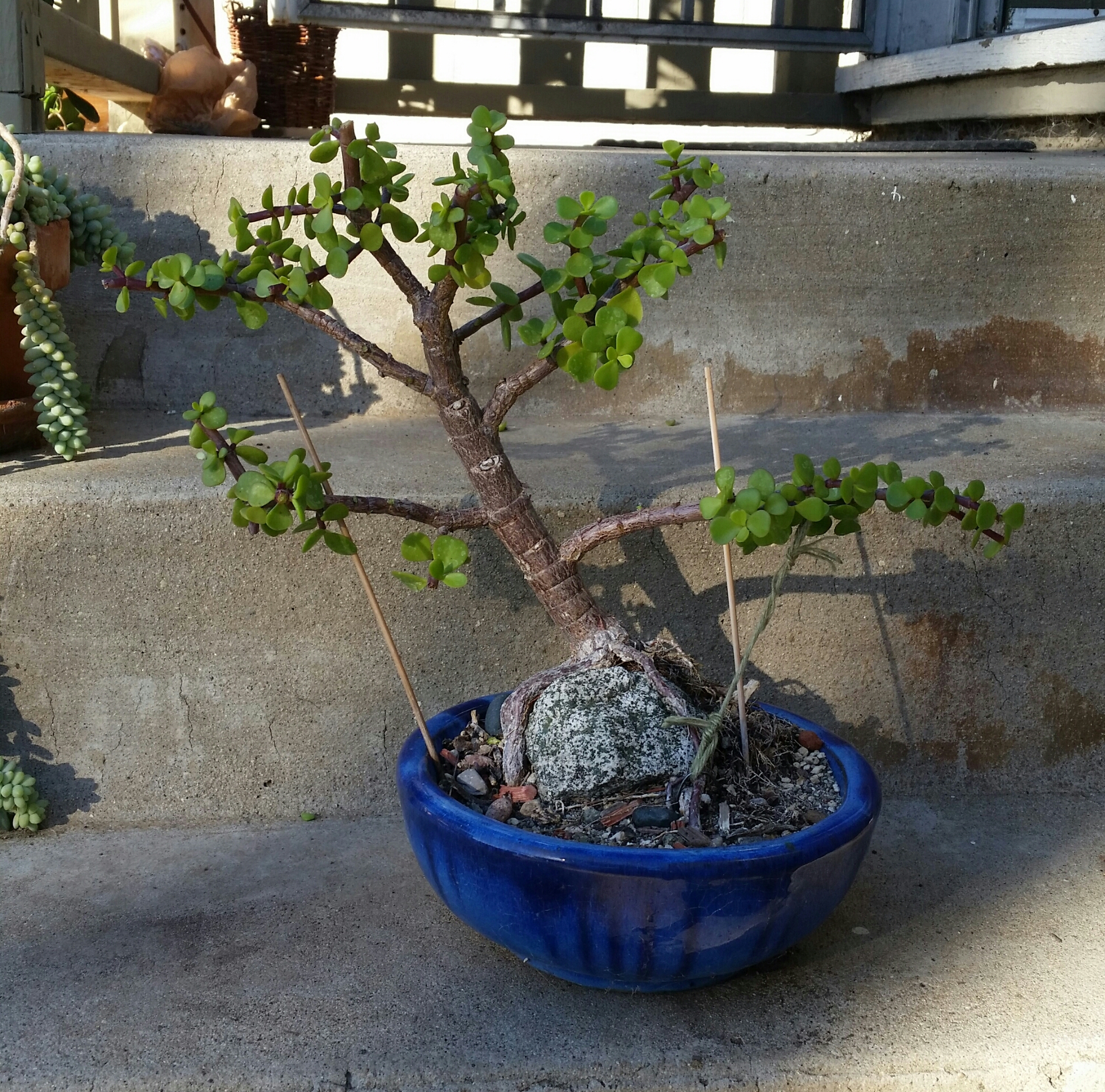This little fella has just taken root in its new mini pot. It hasn’t really begun training yet because I want it to get accustomed to its new home. I’ve only cut it back to promote root growth. I might make a cascade from this baby bonsai. It seems pretty well established so far so it’s training shall soon begin.
I trimmed this branch off of a mother tree and then simply stuck it in water for a month or two near my kitchen window, which is a North East facing window. Nice light there and I always have some kinda starter plant there. Check it out… Continue reading “The Makings of a Ficus Bonsai”






Here’s the deal with bonsai that most people neglect. It’s ALL about trunk development.
Most people will buy a sapling of a common bonsai breed and instantly begin wiring it up or cutting the branches. This is a waste of time because in order to get that harmonious ratio in real bonsai (vs. Mall-sai, the ones you see in shopping mall booths with glued rocks on the surface), you’ll need the tree to grow rather tall to develop the right trunk thickness. Then you’ll remove the entire top of the tree anyways. Like 3/4 of it at least. So why bother training branches that will be gone anyways?
For example, a 3″ diameter trunk has to be 16″-18″ in height in the end. A 1/2″ diameter trunk, which is typically what you’ll buy as a starter bonsai in malls would have to be like 3″ tall to get that ratio right. Or else it’ll just look like an over-pruned sapling. Which it is. But the idea is to give the illusion of a real giant tree.
So, to start with a seed, I’d grow it in the yard for a couple years. Un-prunned and we’ll fertilized with nitrogen and phosphorus rich fertilizer for maximum growth.
Then move it to a 5 gallon pot after pruning back the roots for a few years. And only then should you begin training and branch placement.
That’s the fastest way by seed. You’re looking at 4 years minimum.
Orrrr, you can find a larger tree or shrub that’s already in a 5 gallon pot and already has your desired trunk thickness and begin right now.
Some folk collect field specimens that already have the age as well as the trunk characteristics they’re looking for. However, collection of trees must be done with caution whereas there are many state and federal laws to protect from that. And rightly so. Your best bet is to go to a private home owner, or the like, that are looking to thin out trees or bushes on their personal property. Get down in that dirt and check out the base of the trunk and see its potential for a final design.
I could write a book here Nikki, I’ll try to stay the course so as to not overwhelm you. I gets all excited about bonsai!
Start off with an easy species that grows quickly and can take some trial and error. Ficus is a good one, although slow growing. The Chinese Elm is great, but were I you, I’d begin with a simple jade or other similar small leaved succulent. It’ll just be so you can test out you trunk development skills and can be so abused and pruned down to a nub.
Then work your way up to an Elm or Ficus. Maples are tough and not for beginners. There are many shrubs and bushes that make awesome bonsai and are hardy and relatively easy. Get a few to tend to so you can stay busy during the long waiting periods.
As for tools, there’s tons out there. Don’t go overboard your first few years. Some fine point scissors, a branch cutter, a concave cutter and a few gauges of bonsai wire should be ample for now. You’re just growing trunks anyways right? So no need for the big kit yet anyways. But the wire and cutters can be used on your test succulents while you’re waiting for the masterpiece.
As for books for the beginner, I recommend The Bonsai Handbook by David Prescott or The Bonsai Specialist by David Squire (he talks a lot about different species). Both are great resources.
So, that said, I really hope you get into this fascinating and ancient art. It’s so good for the soul. You’re essentially dedicating years of your life to pay homage to the powerful beauty of old trees. Your sculpting with living organisms and can express yourself through them. The art will give you a great peace and focus that you can carry with you everywhere. In short, do it!
Also watch every Karate Kid movie. Mr. Miyagi (sp?) will teach you all you’ll need.
Check in with me when you find a species you want to work with and I’ll help you along.”
-James Gielow @ Mind Your Dirt
The problem is that many plants are open air pollinators and you can get hybrids that are partly genetically modified if you don’t have them in a greenhouse.
Those bees are out and about, grabbing all that pollen from your neighbors and bringing it back to your GMO free plants! The floozies!
To be 98.0023% certain, you’d need a greenhouse that has its own pollinators trapped inside and make sure none get in from the outside. Then you’ll have real heirloom tomatoes. I’d set up a wall of lasers around the perimeter too!
If you’re looking to let them go to seed and then store the seed, that’s the only real way to do it. I always let some of my “crops” go to seed if I like them, it’s a great practice and investment.
GMO’s are like Pandora’s box, it’s open and it’s out there. No escape! But think about it, since the dawn of agriculture, all crops have been genetically enhanced by man through selective breeding . Just like the wolf or jackal has been transformed into a yapping chihuahua. It’s what we do to breed in desired traits and breed out the undesirable ones.
What we as health conscious farmers want to avoid are the insane pesticides and the GMO crops that are altered to harmonize with these poisons. That’s the real danger with GMO’s and that’s what is thought to be killing off the bees. No pollinators, no food.
In parts of China, due to pollution, there are farmers that hire people to climb up their trees and pollinate manually. Crazy right? A bunch of little ladies with Q-tips up on ladders. We may soon be joining them!
In the meantime, get some heirloom seeds so at least your starting out with the best statistical shot you have. If blooming or fruiting is a problem, try adjusting your nitrogen/potassium ratios depending on the species. If you have space, as well as distance from the neighbors, you might want to consider housing your own pollinators as well. Like the bees that lived in your old farm house walls. They still get out and about, but at least they’ll start working on your heirloom non GMO plants first.
I’ll do some more research and see what kind of article I can put up with you in mind.”
-James Gielow @ Mind Your Dirt